Yes, it is possible to paint granite countertops.
When painting the granite in your home you will need a smooth surface, so make sure you rough up the area before moving onto the next step.
You will also want to use a primer and sealant in order to remove even any microscopic flaws from the surface of your counters or fireplace surround. You can find more information on primers and sealants here.
The Prep
To prep your countertops or fireplace surround to paint, you will need to sand the area, make sure you are using a high-quality builder’s sandpaper.
The type of sandpaper that you use is important because it will determine how well your countertop or surround granite paint job holds up and also what color scheme you can choose for your new countertops or surround.
For an exterior application, you can use a lower grade of sandpaper, but for an interior application, it is important to make sure you are using the right quality.
Priming
You will want to apply a primer to the countertop or surround before you paint.
The reason that you will want to install a primer is that it helps fill in the holes and cracks in your granite and also creates a smooth surface which will hopefully prevent the paint from chipping off or peeling.
You can find a lot of different kinds of primers, but what you choose is up to you as long as it does not have silicone or acrylic in it.
Regardless of which primer you use make sure that the area is completely dry before applying your protective finish. You may want to apply a second coat of primer after the first one has dried.
You need to allow 24 hours for your primer to dry completely before moving onto the next step.
The Sandpaper
For your project, you want to use 220-240 grit sandpaper because it will give you good results that will last over time. Also do not forget to clean your granite before painting it, you need to remove any dust and dirt from your granite.
If you are painting the surround of your fireplace, you want to try to get into all the crevices because it will still be visible even after the paint job is done.
The Sealer
Once your granite has been prepped, you will want to seal it to protect it.
The granite will be able to take paint, but if you do not seal the granite first you could run into problems down the road with mold and mildew because moisture is drawn into the cracks of your granite from humidity in the air.
The sealer that you use for this job needs to have a good drying time because this will make sure the paint job lasts longer.
You can use any of the products you would use for a countertop and they will work well. But, if you are looking to save time and money, then using a granite sealer is your answer.
Painting
Once your granite is prepped and sealed, you want to start painting it. For the paint that you use, you want to select an oil-based primer with a satin finish and then use semi-gloss paint over the primer.
If your painted granite is going to be used for an interior application, make sure the paint you chose has good adhesion characteristics.
The clean-up of the paint job is easy because the primer and paint are all oil-based.
Once you have finished painting your granite, make sure you let it dry for at least 24 hours before using it or putting items back onto your counters.
Before placing items onto your countertops, make sure to check for any loose paint that may have fallen onto your counters when you were painting.
Make sure to seal your granite before using it and make sure you are not placing any items that may scratch the surface of the granite.
Take Your Time
You will definitely want to take your time when painting the granite in your home or business. The countertops or surrounds in your house are most likely a focal point and will be one of the first things that people notice when they walk into your home, so you want to make sure it looks good.
If you take your time with the preparation work, painting process, and clean up then the granite will look great for years and will hold up well when you are done.
Making sure that you are doing all of the work yourself will save you money because then there is no need for hiring a professional to do it for you. You can find everything you need at the local hardware store and they have a wide selection available.
What kind of paint can you use on granite?
There are many kinds of paints that can be used on granite. You can find most of them at your local hardware store and if you want to use something different than what they have then you can also find it online or at a specialty paint store.
You want to make sure the finish is right before putting any type of paint on your granite. Many types of paints can scratch easily, so if you are planning on placing anything on your counters then the paint may need a low gloss finish.
If you are planning to have granite in your kitchen then there is nothing better than using an oil-based primer and paint because it will give you what you want right out of the gate. To seal it, you will want to put on two coats of satin sealer.
This type of paint and primer combination is made for granite and will give you superior results for years. This is the best way to go if you are looking to go the extra mile for your home or business.
If this is not an option then you can always use a latex paint which is a much cheaper option. But, you want to make sure that you get the right kind of latex paint for your granite countertop so it will look good and last.
Using latex paint on your granite counters is fine if you are planning to keep things simple with what you place on the countertops. You will want to make sure that you use a low gloss paint and primer combination and then put on 2 coats of semi-gloss over the primer.
Once it is all done, you will have great-looking granite countertops for years to come.
If you are planning on using your granite counters in the kitchen then go with an oil-based paint and primer combination. This is the best way to go if you are planning on using granite as your main countertops.
Conclusion
In this article, we’ve shared some of the best tips and tricks for painting your own granite countertops. Painting a surface like granite can be daunting because it’s so slippery with all that water-based sealer on it! But we hope the information here has made your project a little easier.
When it comes to cutting, scissors are one of the most important tools in your arsenal.
But with so many different types available, how do you know which type is best for what you need?
The different types of scissors may be used in a number of different fields, but they are all designed for specific use and purpose. If you want to start using these tools, then it is essential that you understand each type’s characteristics so that you can pick the right one for your needs at any given time.
Sewing Scissors
Sewing scissors, also referred to as ‘dressmaker’s shears’ are specifically designed for cutting fabric.
They will have the sharpest of blades and light but sturdy handles that allow you to maneuver between the tight and carefully placed stitches in your fabrics. Most sewing scissors will feature pointed tips so that you can easily cut out patterns and shapes from paper. They are also specially made to have a notch at the end of the blade to help you turn corners, which is essential for cutting fabric but not so necessary when dealing with cardboard or paper.
These snipping tools are distinguished by their distinct, sharp, and long blade, which makes them the perfect tool for cutting fabric.
They also feature a heavy, sturdy handle that is designed to provide the user with maximum grip and control when cutting, which makes them more comfortable than other types of scissors.
1. Dressmaker’s Shears
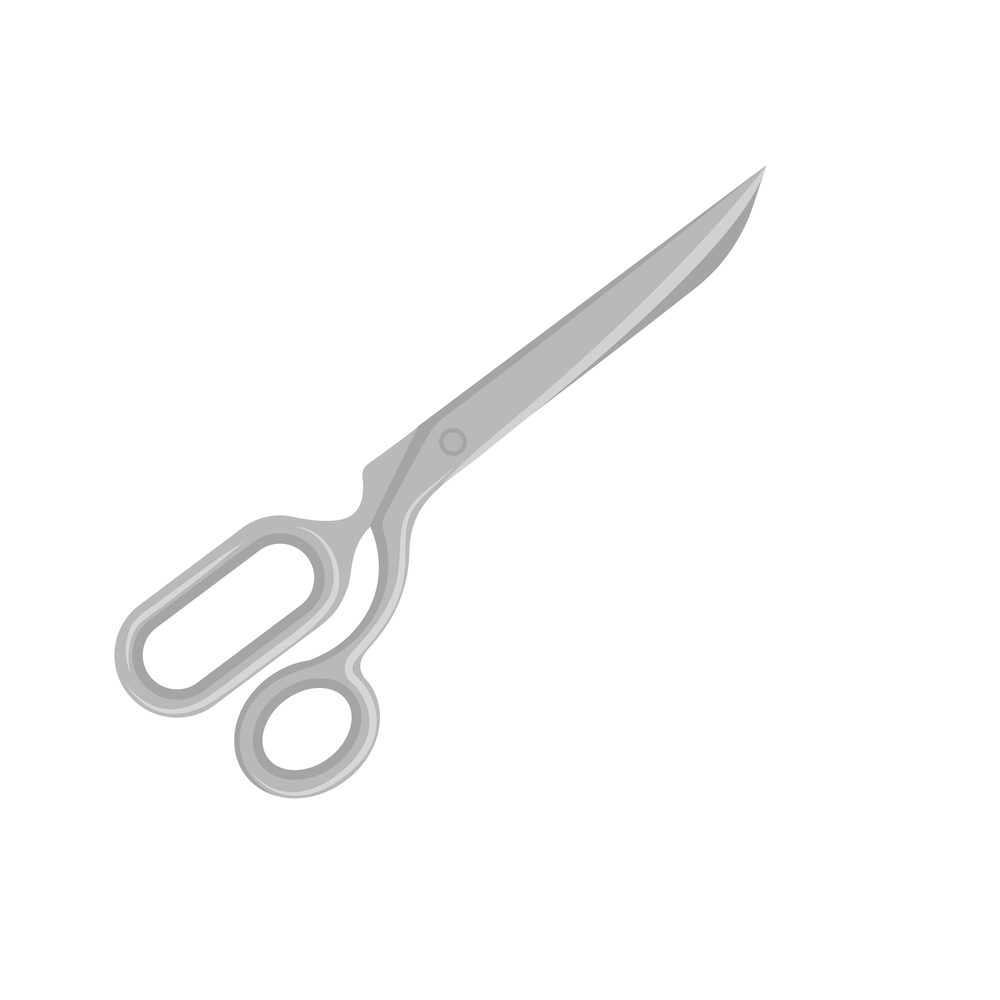
Dressmaker’s shears are made for sewing or fabric-related tasks such as cutting out patterns from paper and snipping loose threads on your clothes. They are made to be comfortable and easy to use. They are great for beginners because they are easier to maneuver than other kinds of scissors.
2. Tailor’s Scissors

Tailor’s shears have blades that feature a sharp edge but this does not mean that you may use them on paper or cardboard.
They are made specifically for use on fabrics and will come with a sharp, narrow blade that allows you to easily cut through even the finest threads. You should avoid using these scissors on hard materials such as paper or cardboard because it can damage the blades.
If you want to make clothes for yourself or your kids, then tailor’s shears are perfect for you.
These scissors have long handles that allow you to push down on the fabric steadily and cut through it with ease. They will also have sharp blades for cutting threads, which is important if you want your sewing ends to be free from fraying or tangled lumps. These snips feature pointed tips so that they can be used to cut out shapes and patterns easily.
3. Pinking Shears

Pinking shears are the main tools used by tailors and stylists to cut fabric.
They come with an extremely sharp blade that features a zig-zag cutting edge that allows you to make a style called pinked or pinking without fraying in the material. The zig-zag pattern will keep the edges of your fabric from unraveling or fraying as quickly and easily.
These shears are also easy to clean because they do not feature any moving parts, which makes them safer when dealing with fabrics that may contain small particles. Pinking shears can be used to trim materials such as cotton, satin, or silk.
4. Buttonhole Scissors

Buttonhole scissors are used to cut straight lines in clothes or materials, particularly those that will become buttonholes.
They may come with a blade on one side of the scissors and a hole-punching device on the other. The blades can be adjusted to make long cuts, which is perfect for creating anything from buttonholes to large cuts in fabrics.
The blades of these snips are either straight or curved, as buttonholes can be long and short depending on their use. They will come with sharp edges that allow you to cut easily through your chosen materials and a hole-punch device for punching holes in the middle of the buttonhole cutouts. These scissors can be used to cut both hard and soft materials that will not be damaged by the hole punch or blades.
5. Appliqué Scissors

Appliqué scissors are used to finish and decorate your materials through the stitching.
They are similar to tailoring shears but they come with an extended blade that can be used for a variety of tasks, such as cutting out pieces or manipulating fabrics more than regular scissors can handle. They will have long blades with sharp edges that make cutting through your materials easier. They may feature a hole-punching device that can be used to cut out pieces for decorative stitching using embroidery floss or thread.
These scissors are specially designed for sewing but they can also be used as regular scissors if you don’t sew regularly and need something more versatile than fabric shears.
6. Embroidery scissors
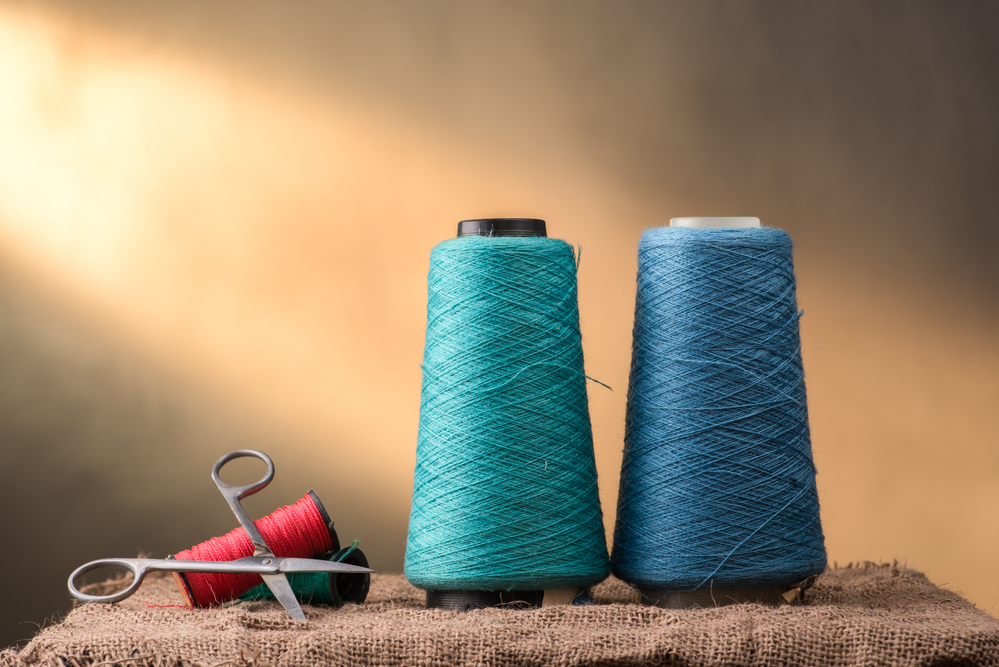
Embroidery scissors are smaller than regular fabric shears and feature extremely sharp blades. They may come with a small hole-punch tool at one end of the handle. These snips can be used to cut out stitches on your material as well as decorative stitches that you want to add to your clothes or other items.
They are great for beginners and people who need to do a lot of fine work with their hands.
7. Crafting Scissors

Craft scissors can easily cut through materials and features blades that are as sharp as regular sewing snips.
They may come with a variety of components in one set, such as cutting, sanding, carving, or embroidery options for your projects. They can be used to cut both paper and cardboard so they are perfect for crafters or anyone who may need to open boxes or packages during a home project.
They can also be used for cutting through the foam, wood, and plastic materials so they are an essential part of your at-home projects.
8. Right and Left-Handed Scissors
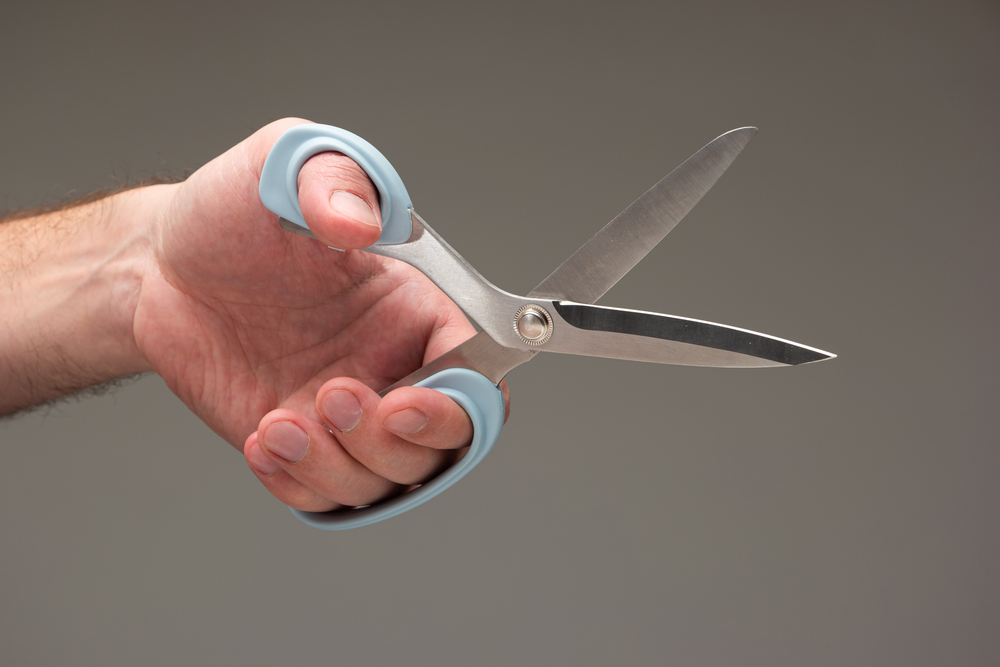
When it comes to scissors, you will find that there are those designed for right-handed people and those made for lefties. Whatever you choose should depend on your personal preferences.
Left-handed people will have a harder time cutting or handling the materials with regular snips so it may be easier for them to use specialized ones in order to easily cut through their materials. Many left-handed people recommend using tailor’s shears, which are designed to be used with your non-dominant hand.
9. Ambidextrous scissors

Alternatively, you may also want to try ambidextrous scissors that can be used with both hands.
These snips are designed for people who have trouble handling regular scissors and wish to make their cutting more efficient and easier. They may come with a variety of components, such as sanding pads or carving tools for your own convenience when creating your own projects.
Some scissors can even be used with both hands and come with combs on top of the handles that allow you to control your materials while cutting them open. They will have durable blades as well as other components made for both right-handed and left-handed people, so they are versatile enough to handle a wide range of household tasks.
Gardening scissors
10. Hedge Trimmers
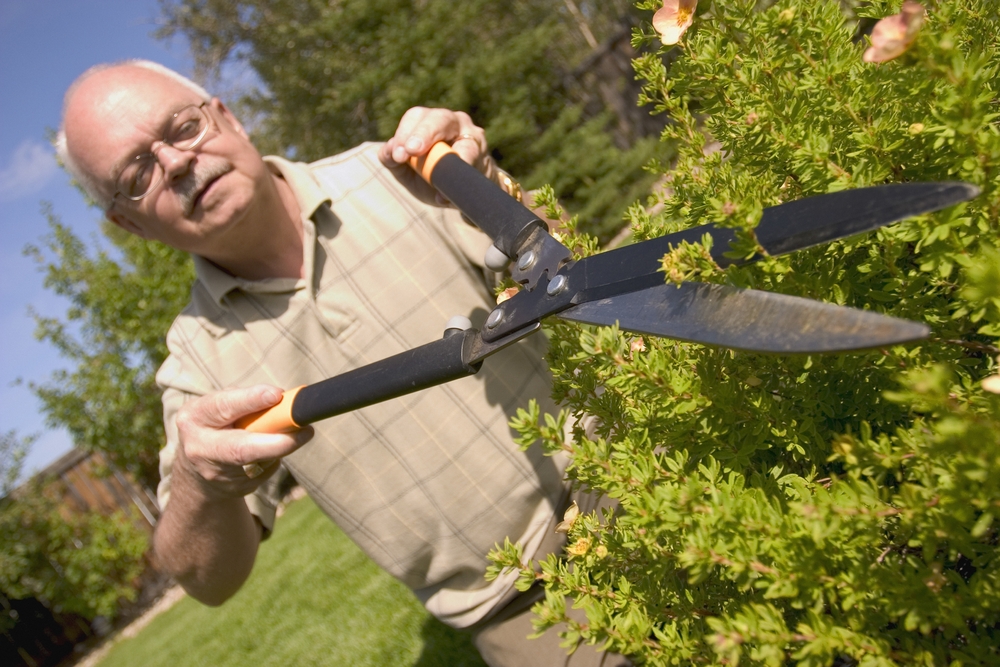
Hedge trimmers are specially designed to trim hedges and help you keep plants neat and well-trimmed.
Some models come with a dual-action cutting system that allows you to make quick and clean cuts through your materials. The blades feature sharp edges that allow you to cut through thick stems without much effort. They can also be used to shape shrubs and trim bushes in your yard.
These snips are not meant for cutting through thick logs or other heavy materials so they should only be used on plants that need to be trimmed. You can find them with serrated blades or circular ones depending on your needs when trimming plants at home.
They may also feature multiple or halved heads to help you get the job done faster and with more precision.
The size of the blades can also vary according to your preferences when using these snips, so make sure that you choose a pair that suits your needs. They are great for people who have plenty of plants at home or someone who needs to take care of small shrubs, bushes, and hedges in their yard.
11. Pruning Shears

Pruning shears are designed to cut through thick stems without much effort. They feature large handles that can be used by left or right-handed people to help you control the direction of your cuts with greater ease. You will find these snips in a variety of sizes and with different blade models, depending on your needs when working on various projects. Some of them can be used to cut through small branches or thick stems while others are designed for both cuts.
These snips feature blades that have sharp edges so you can easily make clean and precise cuts through lots of material at home. They may come with rubber-coated handles that help you better control the movements when cutting.
The blades are also highly durable so they can withstand regular use and abuse during your projects at home. Make sure to choose snips that feature blades made for heavy-duty purposes so you can easily cut through branches or thick stems without any issues. These snips are great for people who have lots of plants or need to take care of their yard at home.
12. Grass Shears

Grass shears are similar to pruning shears but they can be used on plants with longer stems.
They have shorter blades than other types of scissors so you can easily cut through the grass without any trouble. However, the blades may not be sharp enough to trim thicker or tougher materials like branches and stalks found in shrubs.
They are a great option for people who have house plants that need to be trimmed or someone who maintains their yard on a regular basis. They may come with sharp blades or serrated edges to help you make clean cuts through your materials, helping you keep them in good shape. They also feature large handles so they can be used by both right and left-handed people.
Grass shears are easy to use for anyone regardless of their experience level with cutting tools. They have short handles and lightweight blades that make them a great accessory for pruning plants on your windowsill or working in your yard on the weekends.
Grooming scissors
13. Hair Cutting Shears

Hair-cutting shears are available in both straight and curved models. They are specially designed to give you a smooth clipping and can be easily used on long hair without pulling or damaging your locks since the blades have rounded tips.
You will also find these snips grooved on the inside so they can catch more hair, allowing you to cut it off in one go.
Haircutting shears are designed for home use and can be used by both kids and adults. However, you should always find a professional to cut your hair if you have not done it before or do not feel comfortable using these tools.
They usually come with thin blades that make them lightweight so they will not weigh down your hands when using them. However, their thin blades can also be a downside since they may not provide you with the control you need to cut through large amounts of hair in one go.
Haircutting shears are easy to use but it’s best if you practice first on some thick clippings before using them on your long locks. Make sure to choose a pair that includes adjustable blades so you can easily trim your hair at regular intervals without damaging it in the process.
14. Hair Clippers
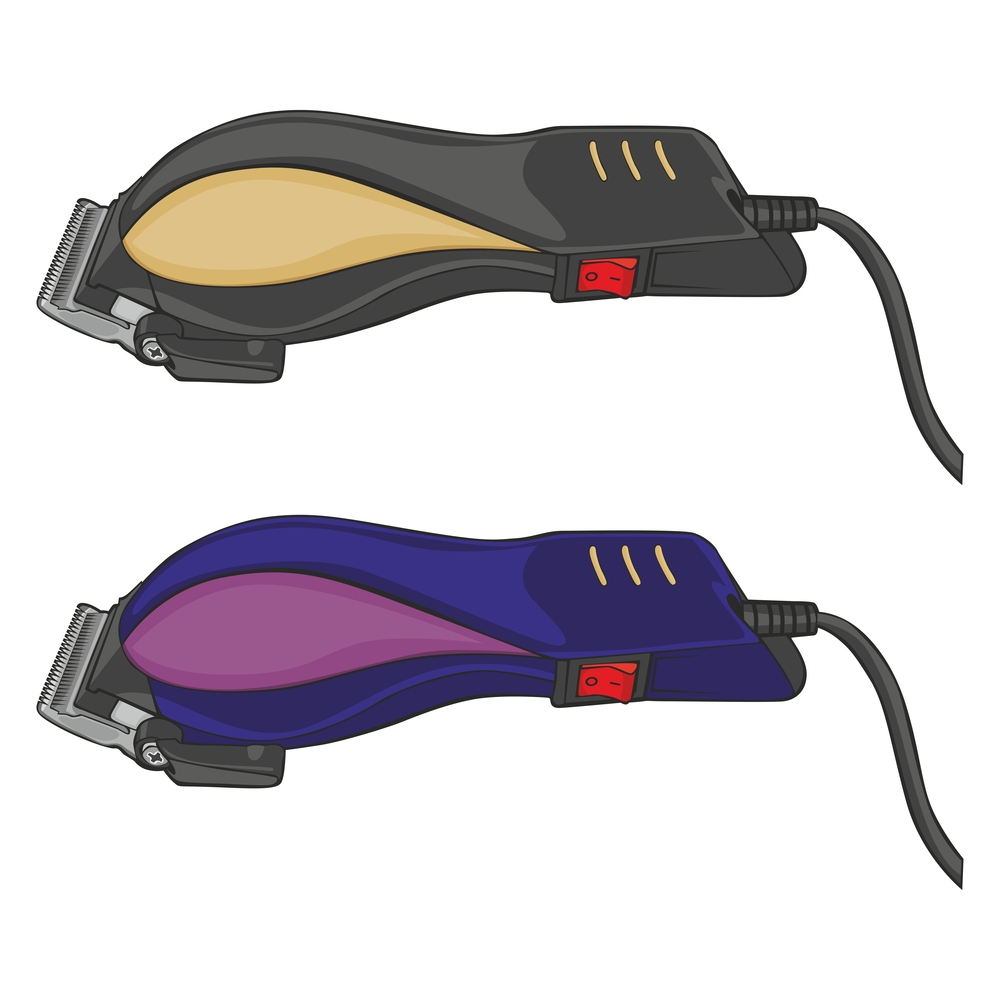
Hair clippers are used to give you a perfectly even haircut every time. You will find them in various blade sizes and with different attachments that make them versatile tools for hair cutting.
You can use most of these clippers at home without having to worry about learning how to use them. They usually have adjustable blades that allow you to choose the length of your hair. Some models feature blades that can be pulled or pushed back to help you achieve the desired length with just a few passes.
It’s easy to use these clippers because all you need to do is place them at the base of your head and go through combing motions and then push down on the clipper to get the desired length. They are ideal for people who want to achieve a short hairstyle without spending hours at the barbershop.
However, you should try these clippers first before using them so you can get an idea of how they work and what kind of results they will give you. You may also need someone to help guide it through your head so you avoid cutting off too much hair if this is your first time using it.
You should also learn how to clean them properly once you are through using them, especially if the clippers come with adjustable parts like combs or blades. It is best if they can be cleaned in warm water and then wiped dry with a towel afterward, but you should check the manufacturer’s manual for specific instructions.
Medical Scissors
15. Bandage Scissors
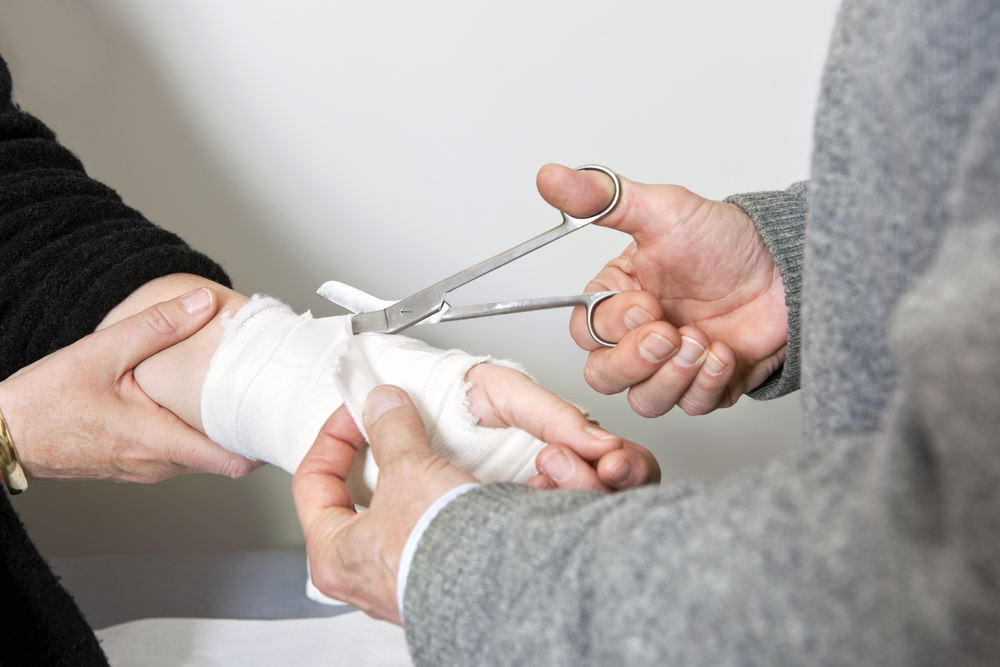
Bandage scissors are specially designed to help you cut off bandages on injured areas. They usually come with thin blades that can easily go between the material and your skin without causing any harm or pain in the process.
These scissors have short handles so they will not get in the way while you are trying to remove a bandage from an injury. You can easily hold these scissors with one hand or if you prefer two so you can get a better grip and cut through thicker bandages.
Bandage scissors are easy to use, but they should only be used for accident-related tasks otherwise they can do more harm than good. Make sure to check the instructions that come with your set of scissors to ensure they are made for the type of use you want it for.
16. Trauma Shears

Trauma shears are used to cut through clothing and material that is stuck on a victim’s skin. They have short and wide blades that allow you to completely remove the item without causing any harm or trauma to the area in question.
They usually come with blunt tips so they will not cause more damage as you try to pry something off the skin. Trauma shears can easily cut through clothing but you should practice on some fabric and scraps first before using them on a victim to avoid harming them in the process.
Trauma shears are not that difficult to use, especially if you know how to handle regular scissors in the past. However, it’s best if your hands are steady when you are using them so you can learn how they work before going to use it on an accident victim.
17. Suturing Scissors

Suturing scissors have a long handle that gives you enough leverage and control for delicate surgical procedures. They come with very sharp tips that allow you to easily make precise cuts without damaging the tissue or causing any harm.
If you are planning to use these scissors in a surgical procedure, make sure they are high quality because the wrong material could easily break during one of your procedures and cause more damage rather than help the victims.
These scissors come with a thin blade that is very sharp so you need to be careful while handling them and even more so if you plan to use them on accident victims or patients. All in all, suturing scissors are excellent tools that should not be taken lightly and only used by professionals who are trained in using these types of scissors.
18. Ophthalmic Scissors
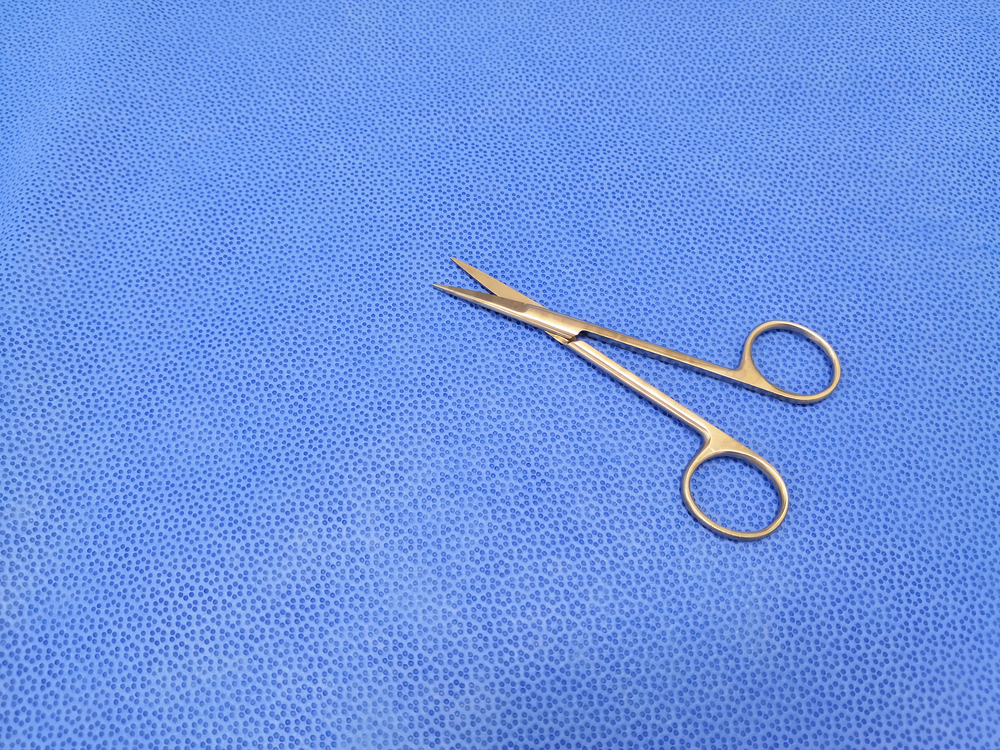
Ophthalmic scissors are the type that has a very fine tip that is used for delicate eye procedures. Just like suturing scissors, these scissors come with sharp points and blades so you need to be careful how you handle them, especially if the blade is exposed.
Ophthalmic scissors are generally designed with long handles so you can easily reach difficult places without risking cutting yourself or the patient. These scissors are also used for laying fine layers of tissue or fabric.
Conclusion
Scissors are such an important household tool, and the first thing you should keep in mind when choosing them is to consider your personal needs. Are you looking for a pair of durable kitchen scissors that can cut through meat with ease? Or do you want a pair of professional cutting scissors that can cut through fabric with ease?
The type of scissors you choose will depend on what your needs are, and once you have identified them, it becomes much easier to choose the right pair in terms of size, shape, quality, and material. It is also important to realize that different materials are used in the manufacturing of scissors. If you have been using a plastic scissors, it might be a good time to upgrade and try something new.
Your fingers may not appreciate it at first, but as long as your scissors are sharp enough, they should make easy work out of mundane chores like cutting meat or fabric. This is why some people choose to buy high-quality scissors for everyday use and keep some different scissors for special occasions.
Hopefully, you now have a better understanding of the various types of scissors that are available on the market today. Each type has proven useful in one way or another, and if you do not need all the types we have listed here, there is no harm in sticking with one or two types.
